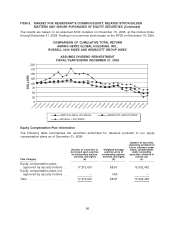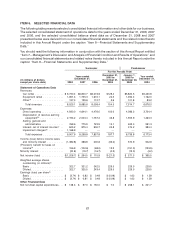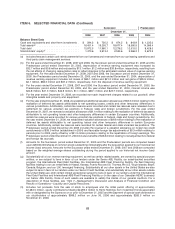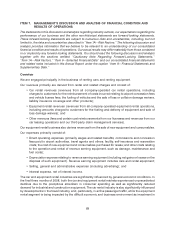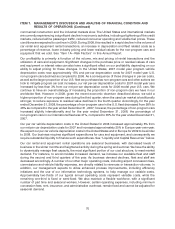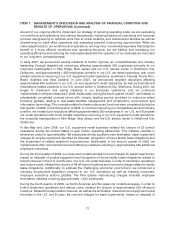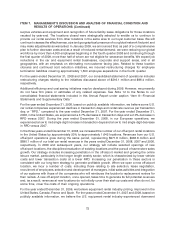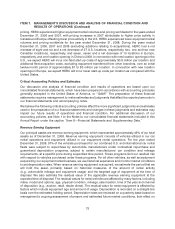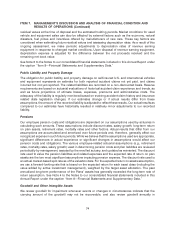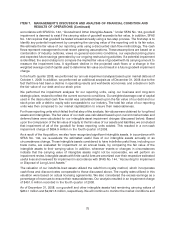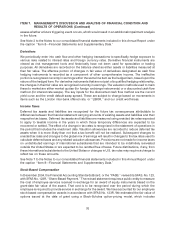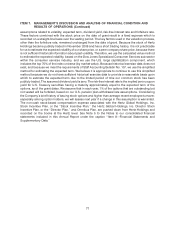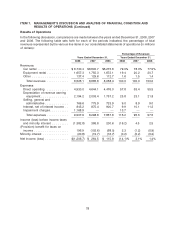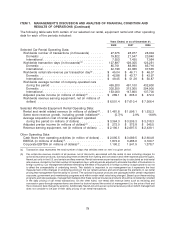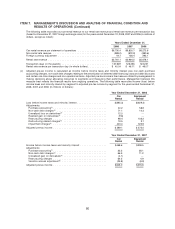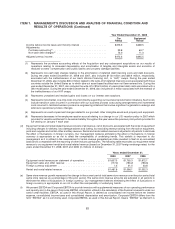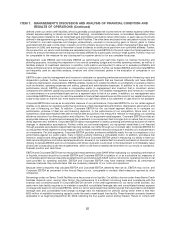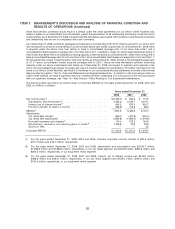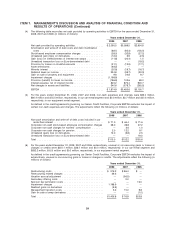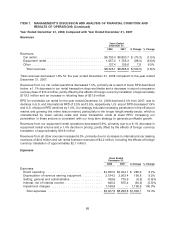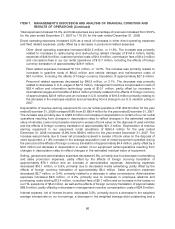Hertz 2008 Annual Report Download - page 96
Download and view the complete annual report
Please find page 96 of the 2008 Hertz annual report below. You can navigate through the pages in the report by either clicking on the pages listed below, or by using the keyword search tool below to find specific information within the annual report.ITEM 7. MANAGEMENT’S DISCUSSION AND ANALYSIS OF FINANCIAL CONDITION AND
RESULTS OF OPERATIONS (Continued)
assess whether a future triggering event occurs, which would result in an additional impairment analysis
in the future.
See Note 2 to the Notes to our consolidated financial statements included in this Annual Report under
the caption ‘‘Item 8—Financial Statements and Supplementary Data.’’
Derivatives
We periodically enter into cash flow and other hedging transactions to specifically hedge exposure to
various risks related to interest rates and foreign currency rates. Derivative financial instruments are
viewed as risk management tools and historically have not been used for speculative or trading
purposes. All derivatives are recorded on the balance sheet as either assets or liabilities measured at
their fair value. The effective portion of changes in fair value of derivatives designated as cash flow
hedging instruments is recorded as a component of other comprehensive income. The ineffective
portion is recognized currently in earnings within the same line item as the hedged item, based upon the
nature of the hedged item. For derivative instruments that are not part of a qualified hedging relationship,
the changes in their fair value are recognized currently in earnings. The valuation methods used to mark
these to market are either market quotes (for foreign exchange instruments) or a discounted cash flow
method (for interest rate swaps). The key inputs for the discounted cash flow method are the current
yield curve and the credit default swap spread. These are subject to change based on movements in
items such as the London inter-bank offered rate, or ‘‘LIBOR,’’ and our credit worthiness.
Income Taxes
Deferred tax assets and liabilities are recognized for the future tax consequences attributable to
differences between the financial statement carrying amounts of existing assets and liabilities and their
respective tax bases. Deferred tax assets and liabilities are measured using enacted tax rates expected
to apply to taxable income in the years in which those temporary differences are expected to be
recovered or settled. The effect of a change in tax rates is recognized in the statement of operations in
the period that includes the enactment date. Valuation allowances are recorded to reduce deferred tax
assets when it is more likely than not that a tax benefit will not be realized. Subsequent changes to
enacted tax rates and changes to the global mix of earnings will result in changes to the tax rates used to
calculate deferred taxes and any related valuation allowances. Provisions are not made for income taxes
on undistributed earnings of international subsidiaries that are intended to be indefinitely reinvested
outside the United States or are expected to be remitted free of taxes. Future distributions, if any, from
these international subsidiaries to the United States or changes in U.S. tax rules may require a change to
reflect tax on these amounts.
See Note 7 to the Notes to our consolidated financial statements included in this Annual Report under
the caption ‘‘Item 8—Financial Statements and Supplementary Data.’’
Stock-Based Compensation
In December 2004, the Financial Accounting Standards Board, or the ‘‘FASB,’’ revised its SFAS, No. 123,
with SFAS No. 123R, ‘‘Share-Based Payment.’’ The revised statement requires a public entity to measure
the cost of employee services received in exchange for an award of equity instruments based on the
grant-date fair value of the award. That cost is to be recognized over the period during which the
employee is required to provide service in exchange for the award. We have accounted for our employee
stock-based compensation awards in accordance with SFAS No. 123R. We estimated the fair value of
options issued at the date of grant using a Black-Scholes option-pricing model, which includes
76


